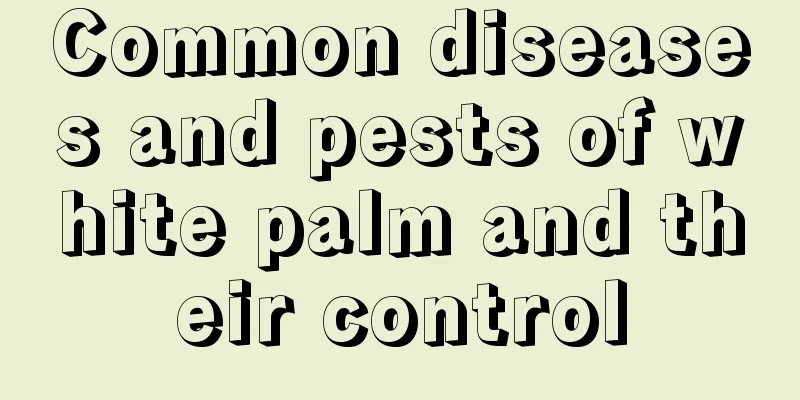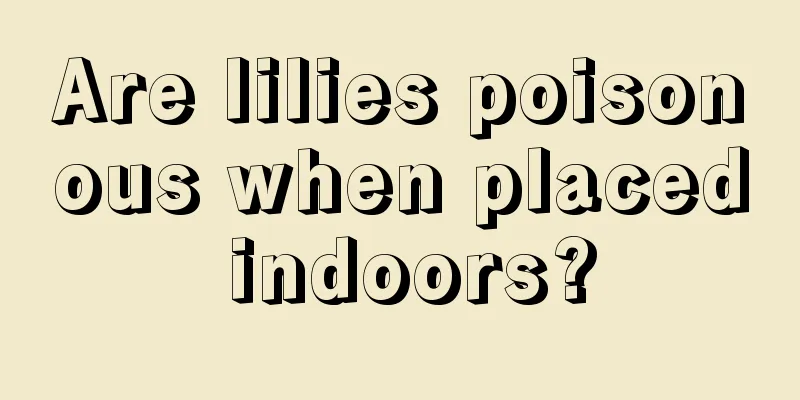Common diseases and pests of white palm and their control

Common diseases of white palmBrown spotBrown spot disease is caused by the bacterium Phytophthora, which mainly exists in the soil. The pathogen invades the plant from the base of the stem. Initially, water-soaked spots appear on the leaves, which gradually turn brown and eventually rot, causing the entire plant to wilt. The specific prevention and control measures are as follows: ① Use 800 times of mancozeb manganese for prevention and control in the early stage of the disease, once every 4-5 days, for 3-4 times in a row, which can effectively prevent the spread of the disease. ② Use 1500 times of oxadiazine + 1000 times of cypermethrin hydrochloride as a mixture for spraying to effectively prevent and treat brown spots and damping off. Root rotFungal disease, the pathogen can infect the roots, stems and leaves. Infection of the roots can cause root rot. When infecting leaves or stems, brown spots appear first. As the disease spreads, the leaves will wither and fall off. In severe cases, the plant will die. The prevention and treatment methods are as follows: ① If root rot is found, clean up the diseased plants in time. If the root rot is minor, remove the rotten part and replant. If the root rot is serious, throw it away directly. Clean up dead leaves in time to avoid infecting other plants. ② When the disease occurs, irrigate the roots with 1000 times solution of root rot. Common pests of white palmaphidAphids mainly suck sap through their needle-like mouthparts, causing the stems and leaves of white palm to become deformed or curled. There are many suitable insecticides, such as malathion, oxydemeton-methyl, aphidicide, and cypermethrin. When insect pests are found, spray the pesticide in time. If there are small amounts of insect pests, scrape them off with bamboo strips. ThripsWhen thrips occur, the leaves of the plants shrink, the growth is slow, and the internodes of the stems are shortened. Thrips are afraid of strong light and often gather in places with little light to cause damage. They are active on the host surface only on cloudy days, in the morning, evening and at night, which is one of the reasons why thrips are difficult to control. When killing thrips pests, it is usually done at night or early in the morning. Spraying pesticides during the day will be ineffective if the insects are not visible. Commonly used pesticides include acetamiprid, chlorpyrifos, imidacloprid, etc. |
<<: Peach blossom disease prevention and control
>>: Common diseases and prevention of saffron (crocus)
Recommend
How to grow onions
1. Prepare the Planting Bed Choose a sunny spot i...
How much is the average yield of oil sunflower per mu? Analysis of oil sunflower per mu yield and income
Oil sunflower yield per mu 3,800 sunflower plants...
Reasons and treatments for purple pearl leaves becoming soft
reason Too much watering will cause the accumulat...
Aloe vera repotting steps, what are the precautions
1. Steps for changing pots 1. Remove the plant: A...
How to plant azalea tree stumps
1. Choose a pot The size of the flowerpot should ...
Can pregnant women drink water soaked with money grass? What are the benefits of drinking water soaked with money grass?
1. Can pregnant women drink it? Moneywort can be ...
How to prune potted apple trees?
When to prune a potted apple tree It is best to p...
What are the cultivation methods and precautions of small banyan trees?
How to grow small banyan tree The small banyan tr...
Geranium old pile cultivation methods and maintenance matters
How to grow geranium into an old pile When gerani...
Can purple bamboo plum be grown in water?
1. Prepare the container Get a container of suita...
How to grow Impatiens so that it blooms
Impatiens blooming Impatiens usually blooms in su...
How to prune a large fortune tree and when is the best time to prune it?
1. How to prune 1. Shortening: For this kind of p...
Can the water used to raise fish be used to water flowers directly? How to water flowers with fish tank water
Can the water used to raise fish be used to water...
What flowers are suitable for growing in Xilin Gol League, and what are the city flowers and trees?
1. Climate characteristics of Xilin Gol League Xi...
How to propagate the money tree by cuttings?
The fortune tree has a good meaning. Many people ...









